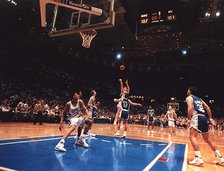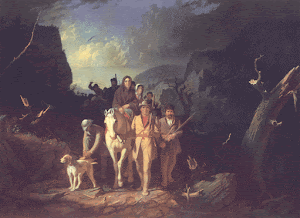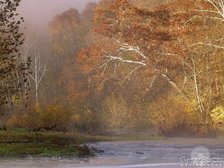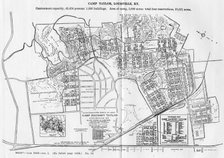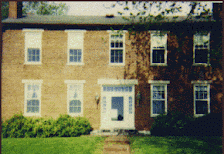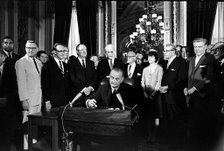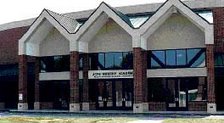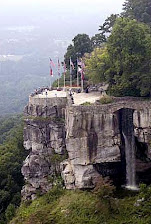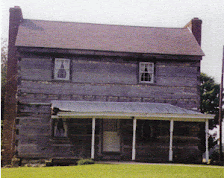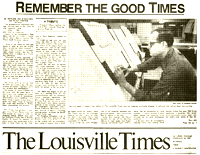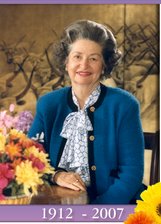130. Mid-Year Report, or what is the Vice President's role this week?
First, we will be taking a scheduled break from blogging here along the Left Bank of the Ohio River near Milepost 606 for the next few days - probably through next Thursday the 5th. This scheduled break comes as opposed to the unscheduled ones we take simply from a lack of posting. The upcoming lack of posting is planned. I could use the cliche-ish description of a "much-needed break" but that would be disingenuous. Planning to do nothing may seem counter-productive, but it is a far better feeling to have than when one plans to do something and then, for whatever reason, fails to do so. Plus, doctors and people in the know tell you to schedule down time now and then, so we are. Of course, all that is subject to change on a whim. Kind of like the Vice President deciding if he is part of the executive, legislative, or extra (as taken in the old Latin form of the word exterus, meaning outside) branch of the government - depending upon his current whim.
But, I digress. One of the things I used to do from time to time was report to my five faithful readers on the faraway places from which others are joining them, at least for a page visit here on the blog. I've not done that since around mid-March. And truthfully, I've stopped keeping a close watch. I can report that as of today, one of my site-counters reports having had 2640 visits, accessing a total of 3670 pages since our inception on January 4th. The other one reads 2568 visits, but only 477 page views, as it has only been reporting those since June 9. I'm not sure why there is a difference in the visit-number. Nor do I care. It is just one of those things I can choose to ignore, much like the Vice President handles executive orders or demands of Congress. Since he is (sometimes) of neither branch, he simply, like me, doesn't care.
Presently, I can report people from at least 32 of the union's 50 states, plus our nation's capital district and city, have paid visits, as well as visitors from fifty different countries from around the world. My guess is most of them get here by accident, but more than a quarter can be documented, thanks to technology about which I understand nothing, as having visited on purpose. The five faithful readers account for maybe 1/10 of the number and I am personally repsonsible for maybe 1/15. They tell me I can eliminate my visits with the use of cookies, but since I post from a variety of places, including a church office, two of my friends' computers (now and then), and a secret bunker in Germantown, known only to me and the girls who run the Atomic Saucer Coffeeshop on East Oak Street (and maybe the Vice President who is into secret bunkers and all other things that might be labelled secret).
But, I digress. Today marks the close (business-wise) of the first half of the year. 2007 is half over. We are in the period of time where the nights are growing longer. This being Kentucky, we have politicians already thinking beyond this fall's statehouse elections and into 2008 and those for the U.S. Senate and House, as well as some local and state legislative contests. I found myself in a conversation last night about council districts and house districts, and if their was any synergy (a Buckminster Fuller word) to be gained by one candidate for the Council who supports another for the legislature, and vice versa co-ordinating their respective campaigns. I said I didn't think such arrangements were wise, although there probably is something to be gained, but not enough to make up for the detractions from the same. Neither party was particularly happy with my comment, but one of them still bought my drink (ginger ale, with some extra lime).
In another recent opportunity, I got to hang out with some of the Yarmuth staffers, who are already in the re-elect mode and I will be happily be playing a much-diminished role in that process. Our congressman has been working hard in Washington, doing lots of stuff a freshman legislator normally wouldn't be doing. It helps being in the majority. One of the arguments we used last fall when people said we needed the previous member's incumbency was that it would be of no use once the Democrats retook the House, something we were confident would happen, and which did indeed come to be. The hanging out part involved a visit to the campaign's storage facility to retrieve some furniture which was being moved to an as-yet undisclosed location - assuming the Vice President hasn't already established that location as part of his separate branch of the federal government.
I have only found fault - thus far - with two things my congressman has done. One is his support of Kentuckian Dr. James Holsinger, an able physician nominated by the Commander-In-Chief to be the nation's Surgeon General. [I had originally typed Attorney General, a faux-pas of enormous implications. We need a new one of those as well]. I find no fault with the good doctor's credentials, as the letters following his name are more numerous than the New Deal alphabet soup, to wit: James Wilson Holsinger, Jr., A.B., M.A., M.S., M.D., Ph.D., Sc.D. (Hon.), M.A.C.P., F.A.C.C., F.A.C.H.E., F.A.A.M.A.(Hon.). Like some of President Roosevelt's ABCs, I'm not sure what some of those mean. My concerns with the doctor are with his insistence of allowing his personal religious views to play a part in upholding laws he may not personally be supportive of. The Surgeon General does not have the privelege of ignoring laws; unlike the president, who can write out an Executive Memo and having done so explains he does not intend to follow a particular part of the Law of the Land, or the Vice President, who writes out nothing, but just proclaims his extraordinary role [there's that extra again] either within or without the constitutional framework of the government.
My other concern, thus far, with my congressman, has to do with the Bridges Plan and its antagonist, 8664, of which I am a supporter. We will leave that discussion for another day. Two issues out of the myriad of things which have happened in Washington in the last six months is nothing of real consequence - just my opinions.
But, I digress. I'm ready to lay off for a few days - or a few more than I already have without being pre-planned and well-announced. This weekend I will doing the announcing at my parish's annual Summer Picnic, telling people which booths are having specials, when there is a coverall on the cake wheel, the winners of the Lucky-13 scratch-offs, calling for an electrician because the fans in the Capital Prize section suddenly stopped, and acknowledging the occassional celebrity or politician who meanders through, although every year they ask me not to be too political, and every year I am, and every following year they invite me back. If you are in the vicinity of Poplar Level Road, a few blocks north of the Watterson Expressway, Holy Family's Picnic runs from about 5pm to midnight today and tomorrow.
Also, on the Fourth of July, the local Democratic Party, as it has done for more than a decade, will be meeting at 9am in front of the Old Courthouse (the building some people call simply the Courthouse, while the Mayor of the Louisville-Jefferson County Metro calls it Metro Hall) for a reading of the Declaration of Independence, one which declared our independence from King George III over 230 years ago. It is difficult not to make comparisons to the junta currently controlling the residency at 1600 Pennsylvania Avenue NW in our nation's capital.
Enjoy the break.

